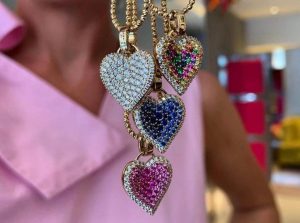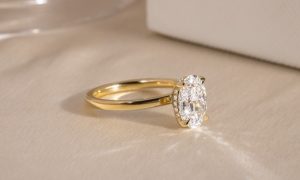
In recent years, a notable shift has taken place in the realm of fine jewelry as artificial diamonds gain unprecedented popularity, challenging the dominance of traditional mined diamonds. This paradigm shift is not only influenced by ethical considerations but also by advancements in technology that have led to the creation of stunning and indistinguishable alternatives. Join us as we delve into the fascinating world beyond the quarry, exploring the surge in popularity of artificial diamond alternatives.
The Ethical Dilemma: Rise of Artificial Diamonds
Ethical Mining Concerns
The diamond industry has long been plagued by ethical concerns surrounding traditional mining practices. Blood diamonds, also known as conflict diamonds, have fueled civil wars, exploited labor, and funded armed conflicts. This dark side of the diamond trade has compelled conscientious consumers to seek alternatives that align with their values.
The Environmental Footprint
Beyond ethical concerns, the environmental impact of diamond mining cannot be ignored. Traditional mining methods are notorious for their carbon footprint, deforestation, and disruption of ecosystems. Artificial Diamonds, created in controlled environments, offer a sustainable and eco-friendly alternative, appealing to environmentally conscious consumers.
Technological Marvel: The Science Behind Artificial Diamonds
Lab-Grown Precision
Advancements in technology have given rise to sophisticated methods of creating artificial diamonds that mirror the natural process. Using high-pressure, high-temperature (HPHT) or chemical vapor deposition (CVD), these lab-grown diamonds are virtually indistinguishable from their mined counterparts, often surpassing them in terms of clarity and purity.
Customization and Innovation
One of the remarkable aspects of artificial diamonds lies in the realm of customization. Unlike mined diamonds, which are limited by nature, lab-grown diamonds offer endless possibilities for innovation. Consumers can now choose diamonds with specific characteristics, colors, and sizes, allowing for a truly personalized and unique piece of jewelry.
Unveiling the Myths: Debunking Common Misconceptions
Perceived Inferiority
A common misconception surrounding artificial diamonds is the perception of inferior quality. However, advancements in technology have bridged the quality gap, making lab-grown diamonds a viable and often superior choice. These diamonds boast identical physical and chemical properties, rendering them equally brilliant and durable.
Cost Considerations
Contrary to popular belief, artificial diamonds are not only ethically and environmentally sound but are also more affordable than their mined counterparts. The controlled production process allows for more predictable pricing, making these diamonds an attractive option for budget-conscious consumers without compromising on quality.
The Future of Fine Jewelry: Embracing Change
Shifting Consumer Preferences
As consumer awareness grows, preferences in the fine jewelry market are undergoing a significant transformation. The surge in popularity of artificial diamonds signals a paradigm shift, indicating that consumers are not only seeking beautiful and meaningful pieces but also demanding transparency, sustainability, and ethical sourcing.
Industry Adaptation
In response to this evolving landscape, the jewelry industry is adapting to the changing tides. Esteemed jewelers are increasingly incorporating artificial diamonds into their collections, recognizing the demand for ethically sourced and environmentally friendly alternatives. This shift not only reflects changing consumer values but also propels the industry toward a more responsible and sustainable future.
Conclusion
In conclusion, the surge in popularity of artificial diamond alternatives is a testament to the changing dynamics of the fine jewelry industry. Driven by ethical considerations, technological advancements, and shifting consumer preferences, these diamonds are not merely alternatives but represent a forward-thinking approach to luxury. As we witness the rise of artificial diamonds, it’s clear that the future of fine jewelry is one that embraces innovation, sustainability, and a commitment to ethical practices.





